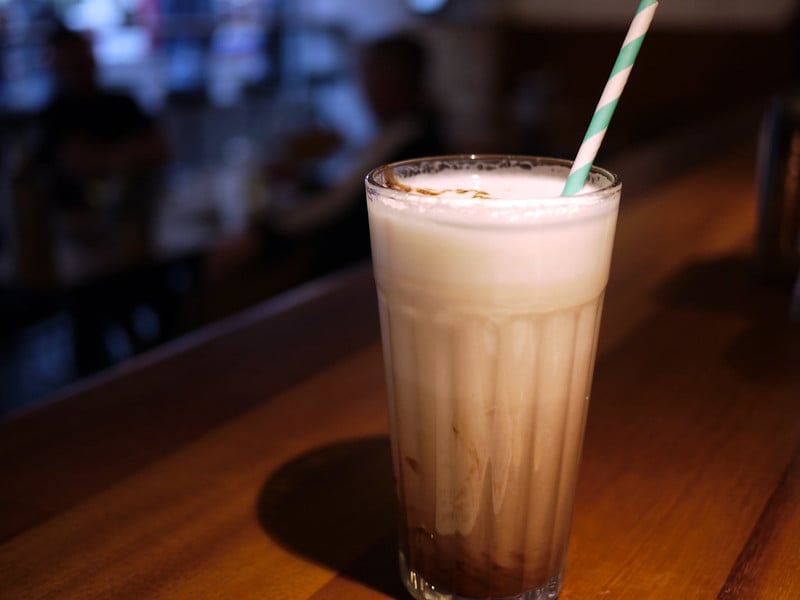Animals and dancing at the end of the summer
Three animal-themed books by Brendan Wenzel that are perfect for ASL, an update on The Deaf Baby Instruction Manual, plus a visit to the Bay Area International Deaf Dance Festival follows me home.
Book Update: April 2026
The Deaf Baby Instruction Manual is under full sail. The final release date has been set for April 2026, right around IEP season. Copyediting is happening, cover discussions are underway, and promotional feelers are being sent out. I should have a pre-order link before the end of October.
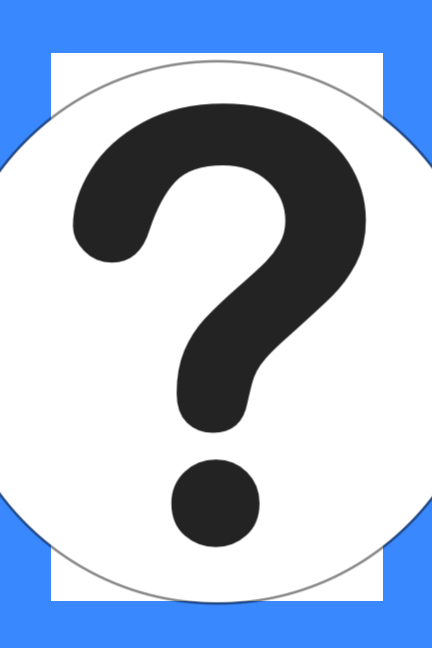
The pub date means that I’ll be running around between now and June trying to get the book into the hands of parents and professionals. If you would like me to come by your school or organization for a talk (either about the book itself, or about reading to deaf kids) please get in touch at will_fertman@icloud.com.
Beyond Brown Bear Part 6: Cats, Bugs, and Everything
A year ago, in my very first Beyond Brown Bear column, I mentioned that I was doing this project to help salvage some of the good memories I had from a time of stress and chaos. As I go along, I’m starting to recognize this as an exercise in both mourning and gratitude. Mourning for the uncomplicated childhood and undiminished parenting I wish I could have given to my children, and gratitude for the safety and joy we do share. Overall, I feel like it’s worked pretty well, because I keep turning up treasures I’d forgotten, including including three books that are easy to sign, and were once in heavy rotation for bedtime.
They’re all illustrated by Brendan Wenzel, who loves animals most of all. His style is chunky and somewhat simplified—he obviously read a lot of Leo Lionni at some point, but he manages to balance kid-friendly stylization (those googly eyes!) with specificity. In his books, there’s never just a dragonfly, a tiger, or an octopus; it’s a Halloween pennant dragonfly, a Sumatran tiger, a blue-ringed octopus. He paints a world full of gradation and fascinating variety.
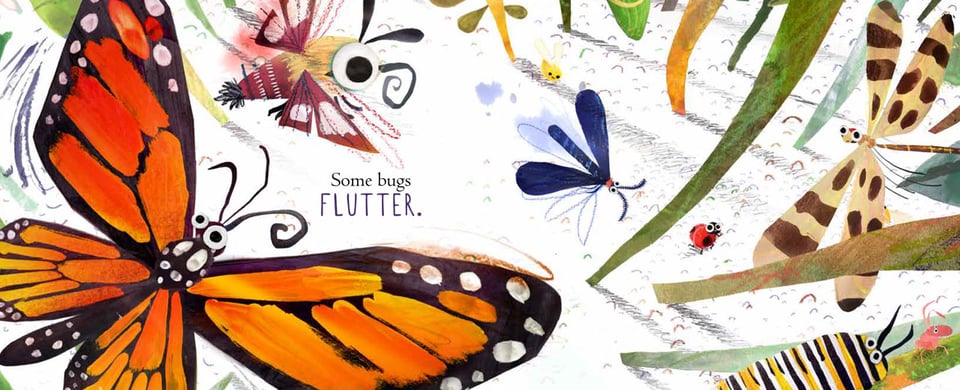
Some Bugs, written by Angela Diterlizzi and illustrated by Wenzel, is a fun and fast tour through insects and arachnids, and all the things that they do.
Some bugs STING, some bugs BITE. Some bugs STINK, and some bugs FIGHT!
The rhythm and repetition makes it a great next step ASL book for parents. 99% of the text is SOME BUGS + VERB, making for an easy interpretation, with fantastic opportunities for classifiers, too—the rhinoceros beetle battle is especially fun to do.
Hello Hello, written and illustrated by Wenzel, does a similar job with endangered species from all over the animal kingdom, matching them by adjectives in a long chain of association: small to small, big to big, spots to spots, stripes to stripes, etc. Again, very easy to sign, this time using HELLO + ADJECTIVE, and giving a parents a great opportunity to role shift and embody the various animals and their traits.

But it’s They All Saw a Cat that I wanted to focus on. Like the other two books, the language is highly patterned, making for a straightforward interpretation into ASL:
And the child saw the cat.
And the dog saw the cat.
And the fox saw the cat.
Yes, they all saw the cat.
But it’s more ambitious than the first two in the way that it plays with sense and perspective.
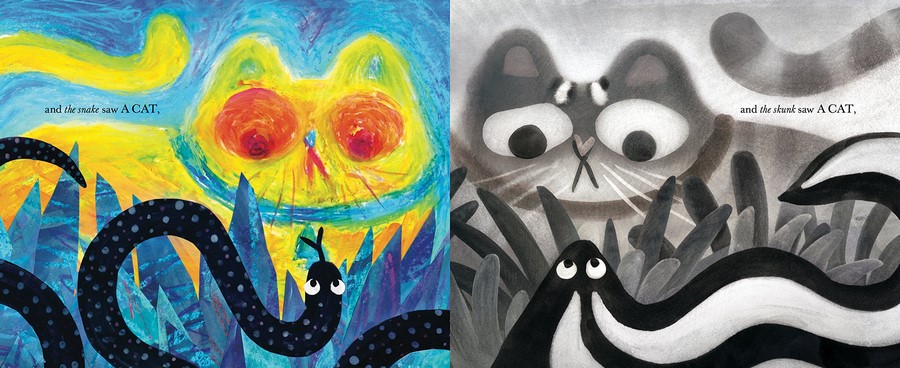
This is a book about perception. The child, the fox, the mouse, the fish, the bat, the worm, etc., all see the cat, one at a time, and each time the cat changes, depending on the viewer. So the bird sees the cat from far away, a small part of the landscape, while the flea sees the cat as its entire world, a vast forest of fur and skin. The thermoceptive snake sees the cat as blots of heat and cold, while the worm “sees” the cat by feeling vibrations through the ground. But while the mouse sees the cat as a predatory demon, the fox sees the cat as a walking confection, plump as a gummi bear.
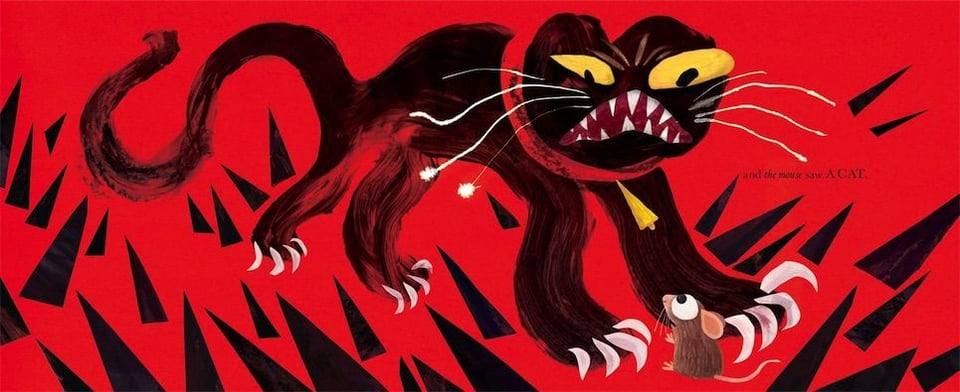
Because it’s above all a visual book, They All Saw a Cat is almost transparent in the way it communicates complex ideas about the inner lives and sensory capacities of these different animals. It could easily have been wordless, and I wonder if it didn’t start life that way. The seamless fit of concept and picture makes it candy for our visual kids, and gives parents a jumping off point to get into both the science and the psychology of seeing.
…the whole of her sermon.
I had a chance to see and participate in some Deaf art in August, starting with the 2025 Bay Area International Deaf Dance Festival, presented by Antione Hunter and his Urban Jazz Dance Company. It was presented to a packed house in the Mission, with dozens of Deaf dancers from across the world. Minda went last year with a Deaf friend, and insisted that I join them this year.
I’m grateful she insisted, because it was incredible. I wish I could show you, but video of the festival is hard to find. In any case, dance is a living art, and there really isn’t any way to get its impact remotely—it’s got to be made right in front of you, like an egg cream.
Watching the show, I was impressed by the range of dances, and also dancers: while there were plenty of contemporary performers in stark leotards, there were also paunchy boomers turned out in their disco best for ASL soul interpretations, kente-draped dancers from Jamaica, a Bollywood tribute act dripping in rhinestones, and formal bowtie-and-bonnet-clad polka artists from Botswana, among many others. The audience was even more diverse, with Deaf, DeafBlind and hearing folks of all races and persuasions, adults and children, interpreters and civilians, all rolled into a single breathing community.
That community aspect of the event really started to come into focus after the show. The first hint was when we ran into one of the (very sweaty, very triumphant) Urban Jazz performers on the train home from the show. We congratulated him and chatted for a few minutes, and it left a warm feeling. But then a few weeks later, we ran into another of the dancers, this time at an ASL-interpreted nature-drawing activity for kids and families at Tilden Little Farm, a municipal petting zoo and nature education center in the hills above Berkeley.
That event was organized by Minda in her role with California Hands & Voices. Like you’d expect, the vibe was a lot less “downtown warehouse” and a lot more “suburban playground,” with Deaf and hearing families and their kids checking out the plants and animals on display, sketching and exploring, alternately watching and ignoring the presentations, and generally horsing around. And then it turned out that one of the moms had performed a showstopping pas de deaux two weeks before. After I got over the out-of-context shock, we started chatting. It turned out that we had friends in common, and that Oscar and her daughter had friends in common, too. The connections keep multiplying.

This is how community is like dance and an egg cream. Freshness is the key ingredient, and being present, in person or online, is the only way to get those fresh connections. Unfortunately, as parents, we’re the absolute worst people to build community. We’re tired, we’re busy—this is the August newsletter, after all—and even if we all do get together, having a deaf child might be the only thing we have in common with one another.
But we can’t be passive about building ties with each other, and with our kids’ larger communities. Right now, the institutions that we as parents often lean on for support are under threat. Protecting these systems means working together and building trust both inside and outside these systems: showing up is how we’re going protect our kids. Making it to ASL class. Chaperoning the field trip. Saying “hi” on the train. Sending the newsletter. Making the small efforts, and letting the connections light up.
First the milk, then the seltzer, then the chocolate. Stir and enjoy.
